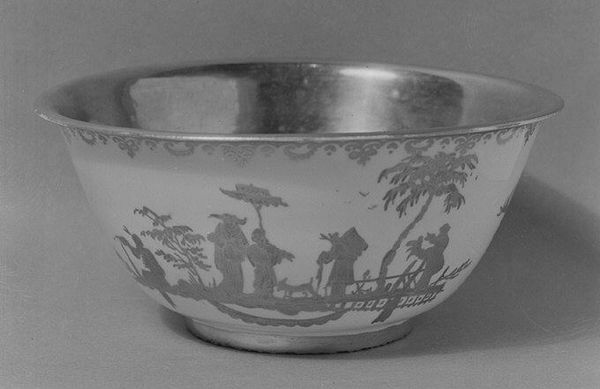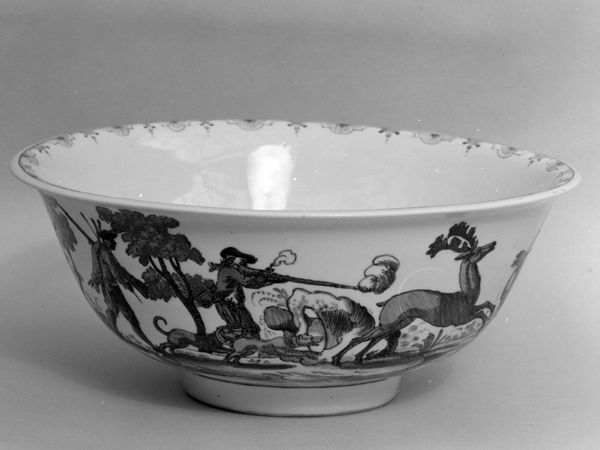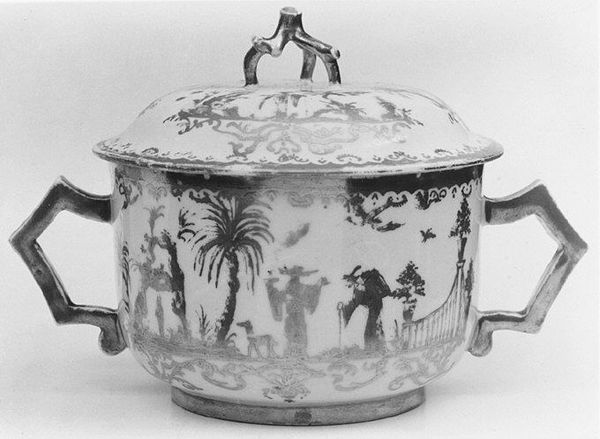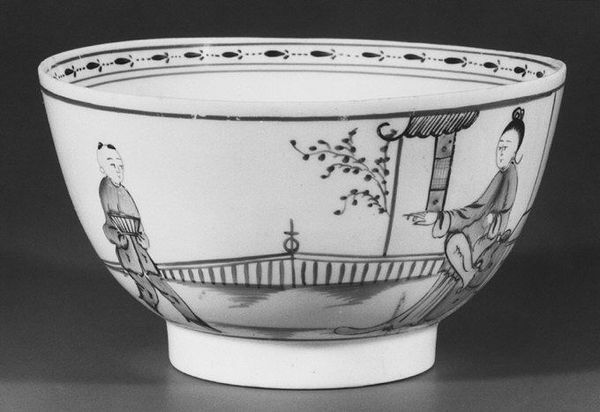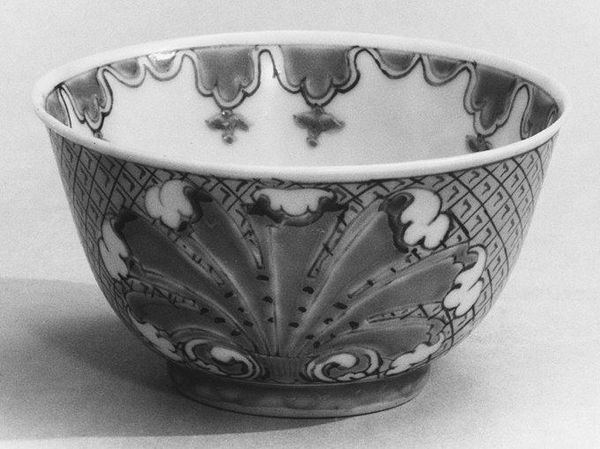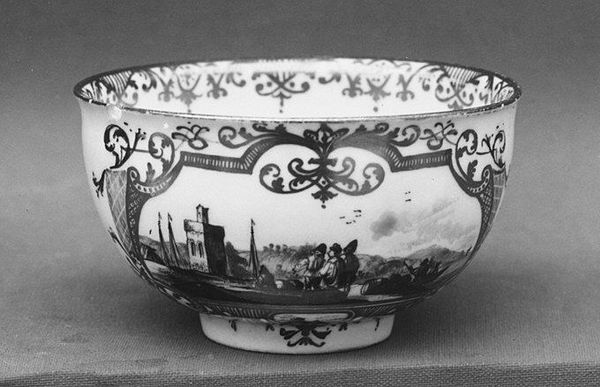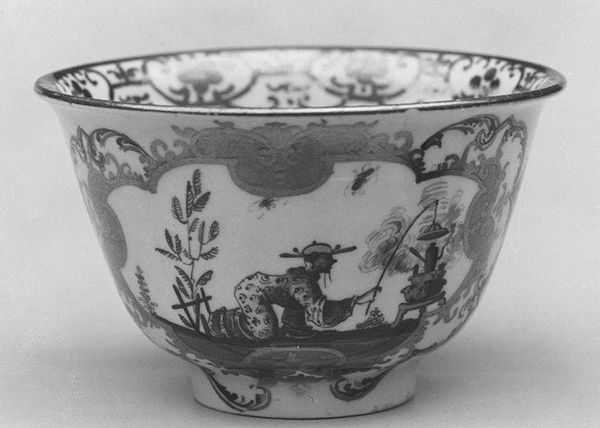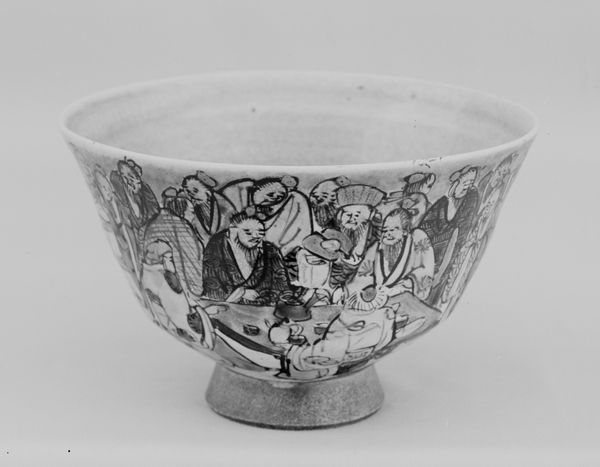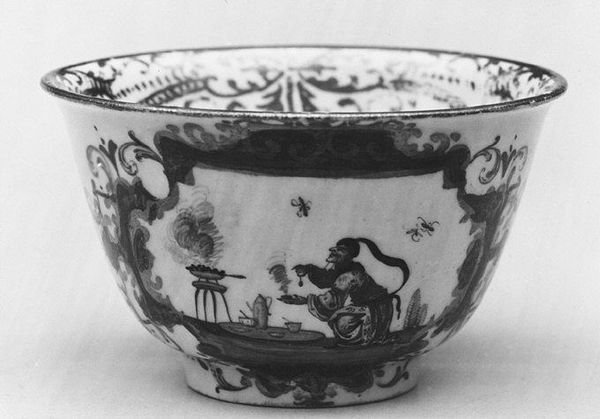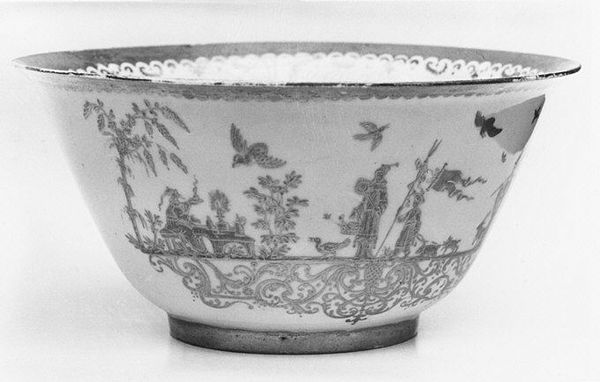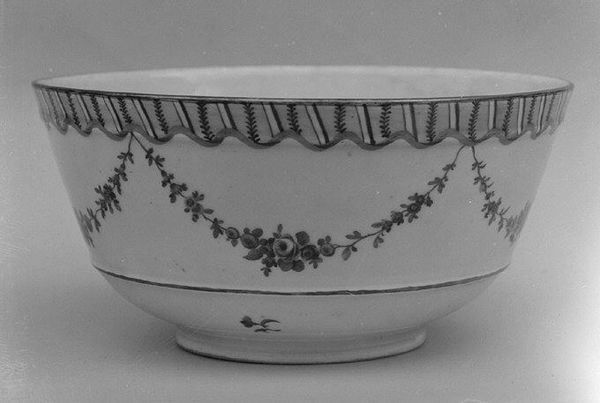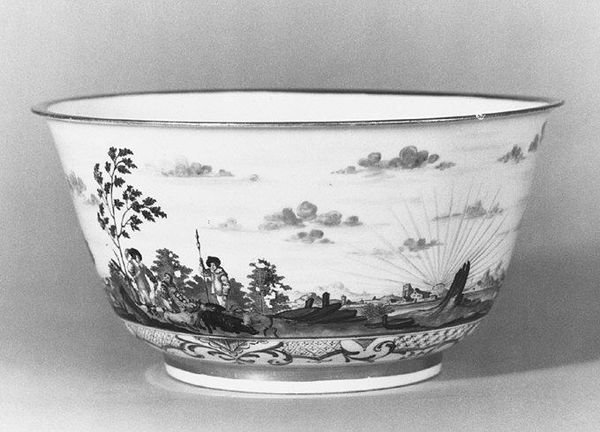
ceramic, porcelain, sculpture
#
landscape
#
ceramic
#
bird
#
porcelain
#
figuration
#
sculpture
#
genre-painting
#
rococo
Dimensions: 3 1/2 × 6 15/16 in. (8.9 × 17.6 cm)
Copyright: Public Domain
Editor: We’re looking at a porcelain bowl, made by Meissen Manufactory between 1719 and 1729. It's currently held at the Metropolitan Museum of Art. The painting on it looks very stylized, almost like a scene from a play. What compositional elements stand out to you in this work? Curator: Immediately, the curvature of the bowl asserts itself. This shape dictates the Rococo landscape scene that wraps around it. Note how the dark figures provide a rhythm against the blank space. This is punctuated with delicate floral designs around the figures at the middle, shifting toward simple geometric patterns at the top of the bowl. It gives the entire design movement and directionality. Do you notice the rendering of depth and the flatness within a single composition? Editor: Yes, I see it! The figures and some plants are quite detailed, while other elements like the mountains appear almost like silhouettes. How does that play into the Rococo style? Curator: Precisely. Rococo, despite its ostensible ornamentation, frequently explored flattening space and form. Here, that flatness accentuates the two-dimensional nature of the bowl as a decorative object rather than an illusionistic painting. Consider, too, the contrast between the smooth, almost pristine surface of the porcelain itself and the intricacy of the painted designs. Editor: So, it’s the tension between surface and depth, between ornamentation and the object’s basic form? Curator: Exactly! That dynamic interaction of forms and techniques reveals a great deal about the artistic intent and formal logic of the work. Editor: I hadn't thought about the flatness adding to the object quality. It’s almost like the painting reinforces that it's a bowl and not trying to be something else. Curator: Indeed! Considering the intrinsic qualities—shape, decoration, materiality—we apprehend the complexity of Rococo aesthetic principles.
Comments
No comments
Be the first to comment and join the conversation on the ultimate creative platform.

